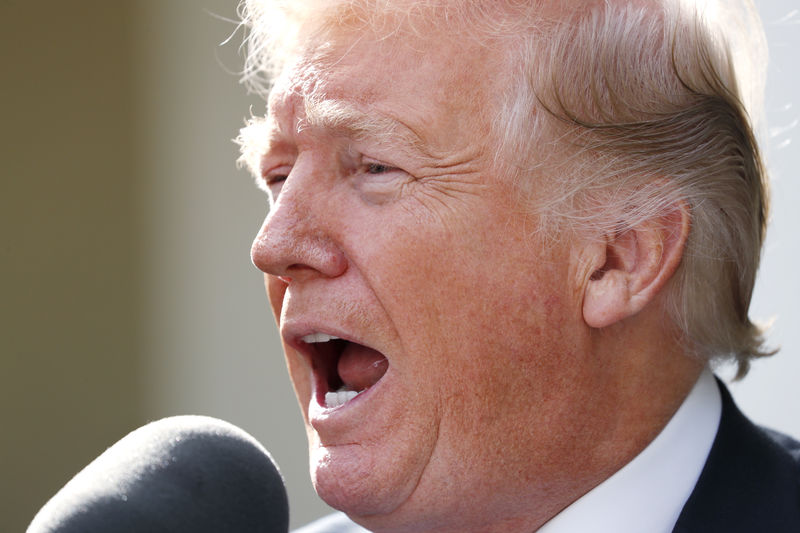Street Calls of the Week
(Bloomberg View) -- Should market participants be more anxious about the Trump administration? Probably not -- at least for the near-term. But over the next year we will see a remaking of the Federal Reserve that could pose a medium-term threat to the business cycle. And that’s something to keep an eye on.
Equity prices continue to reach record highs, puzzling even Nobel laureate economists. The stock market’s ebullience remains a surprise given the considerable policy uncertainty attributable to a White House that appears at best ineffective and at worst chaotic. Typically, markets hate uncertainty. So why isn’t the uncertainty sending stocks lower?
I think the explanation is that presidents often have very little impact on economic outcomes, at least in the short-run. They take the blame and credit, but for the most part they are simply at the mercy of the business cycle.
President Donald Trump is blessed with an economy that has nestled into the mature stage of a business cycle. This is when things chug along, with Washington mostly a distraction, a sideshow to the main event of American capitalism. Abstracting the hurricane-induced data distortions, job growth remains solid, unemployment and inflation are low, business investment is picking up, and the manufacturing sector continues to heal. What’s not to like? And, as a general rule, if the economy grows and looks likely to continue to do so, stocks will more likely rise than fall. The uncertainty is, well, uncertain. But profit growth is real.
Moreover, those anxious about risks to the economy often forget that the economy is more resilient than commonly believed. This is partly because most people have to get up and go to work in the morning to survive, creating a little-appreciated but critical base for growth.
The resilience also partly stems from the fact that the Fed has more policy flexibility than conventional wisdom would lead one to believe. Although it is true the monetary response to a typical recession required a greater interest-rate reduction than the Fed’s current 100 basis-point of room allows, policy makers have enough leeway to address more modest negative shocks. The Fed successfully responded to the 1987 equity crash, the mid-1990s slowdown, and the Asian financial crisis with at most the current level of policy room.
Still, the central bank cannot easily respond to a recession of its own making. The Fed will likely have limited room to cut rates and may be hesitant to return to quantitative easing. These are very real medium-term risks to the economy. Though note these risks already exist with the current leadership and may or may not rise with the next.
For example, the Fed continues to push for rate hikes on the basis of a Phillips curve type model of inflation, even as former Fed Governor Daniel Tarullo describes this model as broken and argues there is an “absence of a working theory of inflation dynamics that is useful for real-time policy making.” It is more likely than not that the Fed will slow the pace of rate hikes if inflation remains weak. But it may not, risking not only a recession but aggravating the existing policy limitation by entering that downturn with reduced inflation expectations.
Even if inflation materializes as anticipated, the Fed’s path of rate hikes may still prove too aggressive. Dallas Fed President Robert Kaplan, for instance, argued that the central bank should be wary of inverting the yield curve.
As a final example, consider quantitative easing. Although the Fed claims this tool gives it additional firepower, I suspect policy makers would would like to avoid reviving large-scale asset purchases. That resistance could slow the Fed’s response to the next recession.
Trump could heighten these risks by appointing leadership that would be even more committed to the existing inflation model or predisposed to act slowly. For example, at the Nov. 2-3, 2010, meeting of the Federal Open Market Committee, former Fed Governor Kevin Warsh lauded former European Central Bank President Jean-Claude Trichet for postponing monetary policy action until European fiscal authorities enacted austerity programs. That is the kind of delay that would turn a soft patch into a recession or worsen a recession. Beyond the delay, the use of the Fed to hold the fiscal authorities hostage during a crisis would not make Congress amenable to maintaining the bank’s independence, which could further erode the central bank’s effectiveness.
Still, while this risk is real, it may be that one or two such candidates do little harm if the majority of the leadership remains within reasonable parameters. The selection of Randal Quarles as a governor speaks well on this point. And also note that the regional Fed presidents can serve as a check on the board’s power -- so a practical response to concerns about the board’s composition is to pressure the regional banks to continue to appoint high-caliber individuals to their top spots.
This column does not necessarily reflect the opinion of the editorial board or Bloomberg LP and its owners.
Tim Duy is a professor of practice and senior director of the Oregon Economic Forum at the University of Oregon and the author of Tim Duy's Fed Watch.
